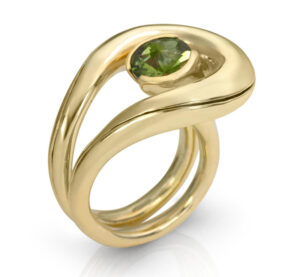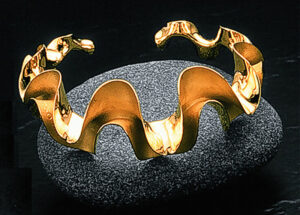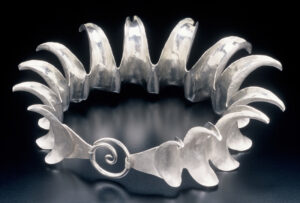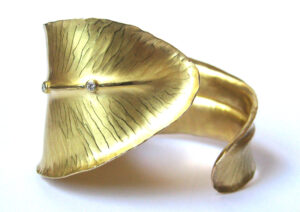By Renée Newman
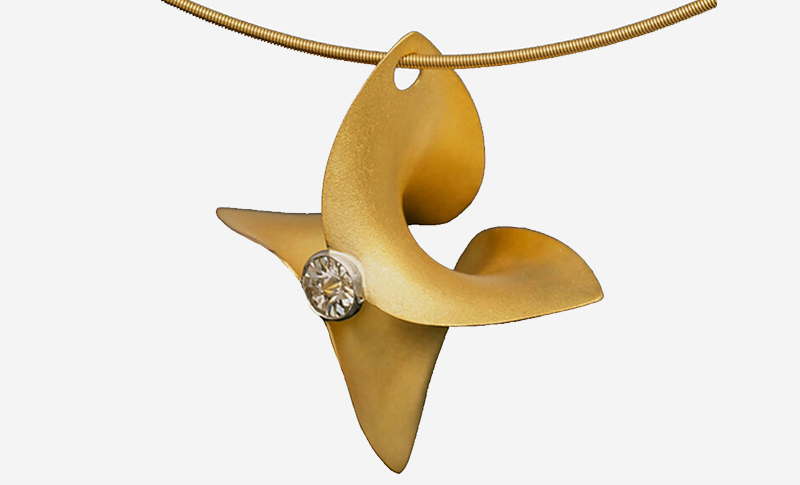
Photos courtesy Michael Good Designs
While most modern jewellery is cast in a mould, stamped by a machine, or formed from wire, a few innovative individuals have been creating pieces from a thin, flat sheet, or strip of metal. If this material is hammered over a snake-like stake of steel, wood, or plastic, the flat sheet can be curved both upward and downward at right angles by compressing the centre and stretching the edges, as seen in the hyperbolic pendant in Figure 1. The pattern of the sheet determines the resulting form, but many different shapes can be made from the same pattern.

This unique process was dubbed ‘anticlastic raising’ by Michael Good—a goldsmith in Rockport, Maine, who popularized the technique—and by Heikki Seppä, a Finnish metalsmith. In 1977, Good took a workshop by Seppä, who showed him the basic ways of putting a compound curve into a sheet of metal (like a saddle form). After learning the basics, Good figured out how to continue forming the curve into a tube.
From 1981 to 1986, he won several awards, laying the foundation for a long career not only in designing jewellery and sculpture, but also in teaching the anticlastic raising technique at professional schools and universities around the world (Figure 2).
A history
While visiting the National Museum of Ireland in Dublin, Good and Irish metalsmith, Brian Clarke, noticed some anticlastic-raised artifacts dating to approximately 3000 BCE. Notably, they came across a ribbon necklace made out of a sheet of metal formed into a double helix structure.
Clarke determined later the metal had been shaped over antlers instead of on a snake-like stake. Historically, there have also been some functional uses for certain forms made by basic anticlastic techniques, such as spouts and handles, but only since the 1980s has anticlastic-formed jewellery been available for sale; now, it is crafted by a number of metalsmiths, many of whom attended classes and workshops led by Michael Good.
Benefits

Photo by Mark Nantz
Anticlastic raising allows jewellers to create strong but lightweight jewellery with thin metal sheets. Considering the high cost of gold and other metals, this is a major benefit to designers like Timo Krapf, a former apprentice and student of Michael Good who now specializes in creating jewellery using anticlastic raising. During the process, the metal is hammered hundreds of times with small overlapping blows. This compresses and hardens the material, making it much stronger than cast metal.
Krapf likes simple, pure forms, and pieces with graceful, fluid lines. This can be seen in his South Sea pearl pendant (Figure 3), which was created from a long flat sheet of platinum and a black leather cord. Krapf uses the contrast of the black surface and white metal to create excitement and movement in the piece. Not many designers have used platinum in anticlastic forming because it is more challenging to form than silver.
The anticlastic raising technique allows Krapf to produce exceedingly light, hollow earrings with organic curves, as seen in the black diamond earrings in Figure 4. As far as comfort goes, pieces such as these cannot be beat.
Meanwhile, in the green tourmaline ring seen in Figure 5, Krapf uses a much thicker sheet of 18-karat gold. This element of the design protects the piece from denting when it is worn. The ring’s smooth, flowing style is very practical, as it will not snag or get caught on clothing, and the tourmaline is well secured and protected from damage. When Krapf develops a new form using the anticlastic technique, he typically has to create one or several new tools to form the piece perfectly. This is a hurdle not many metalsmiths are willing to cross.
In addition to practicality, anticlastic pieces are also very flexible and springy, which means clasps are not always necessary. A bracelet like the ruffle cuff by Michael Good seen in Figure 6, for example, has such flex it can simply be pulled open, slipped on, and closed.
Alexandra Hart, a designer/goldsmith based in San Diego, includes anticlastic raising in her metalsmithing techniques to help in creating dramatic and graceful three-dimensional jewellery forms. Sometimes she combines it with other techniques, as seen in the sterling silver necklace in Figure 7, which was crimp-raised from a single sheet as though to form a vessel, then section cut and anticlastic hammered to create the protrusions. Hart’s 18-karat gold ‘Feather Bypass’ cuff (Figure 8) was first fold-formed, and then anticlastic hammered for the reverse curvature.
Learning the process

Photo by Sarah Rey
Although anticlastic raising is a relatively simple process and does not involve expensive or high-tech tools, it can take up to two years of practice before a jeweller is competent and quick enough to turn a profit on a piece using the technique. Indeed, it is a challenging task to perfect making all curves of a piece smooth, uniform, and symmetrical. Since anticlastic raising involves moving metal, it is best suited for ductile metals, such as most bronzes, silver, and 18- or 22-karat gold.
Michael Good’s website (michaelgood.com/anticlastic-raising) serves as an excellent resource for designers interested in learning more about the technique. The page includes a link to a free, downloadable PDF with diagrams showing how to shape metal using the anticlastic technique. The required tools are also illustrated and described.
Anticlastic workshops and classes are, of course, even more helpful. Good offers workshops at his studio in Rockford, Maine, as well as in Puerto Rico and Boston. The workshops are limited to a maximum of 10 students.
Anticlastic raising offers jewellers the opportunity to create distinctive pieces, which set them apart from competitors and are difficult to comparison shop. Customers love these one-of-a-kind creations. In addition to being more affordable than heavier weight jewellery, these designs are expressive, comfortable, and incredibly striking.
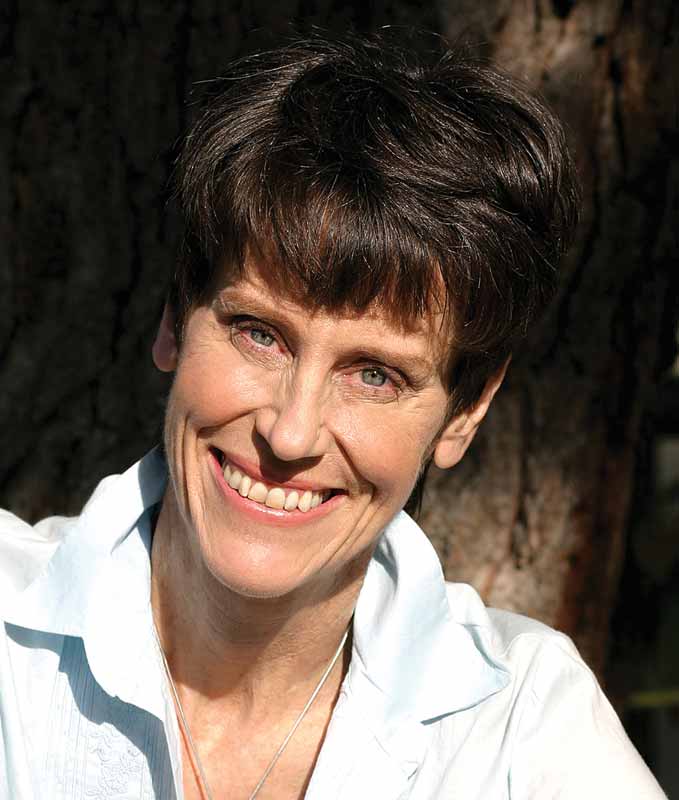 Renée Newman, GG, is a gemmologist and the author of Gold, Platinum, Palladium, Silver & Other Jewelry Metals and 13 other books on jewellery and gems. She became interested in jewellery metals while overseeing jewellery quality control at the Josam Diamond Corporation in downtown Los Angeles. Her metals book is used as a textbook at the Texas Institute of Jewelry Technology. For more information about Newman and her books, visit www.ReneeNewman.com.
Renée Newman, GG, is a gemmologist and the author of Gold, Platinum, Palladium, Silver & Other Jewelry Metals and 13 other books on jewellery and gems. She became interested in jewellery metals while overseeing jewellery quality control at the Josam Diamond Corporation in downtown Los Angeles. Her metals book is used as a textbook at the Texas Institute of Jewelry Technology. For more information about Newman and her books, visit www.ReneeNewman.com.






